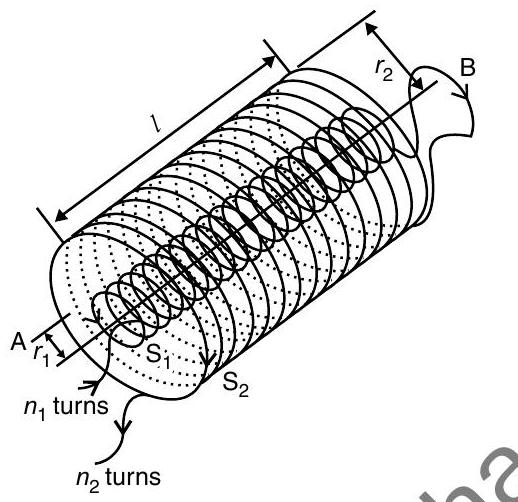moving-charges-and-magnetism Question 30
Question: Q. 3. A toroidal solenoid of mean radius
U] [O.D. Comptt. III 2017]
Show Answer
Solution:
Ans. Formula for magnetic field of toroid 1
Calculation of magnetic field
Effect of change of core
Since Bismuth is diamagnetic, its
[CBSE Marking Scheme 2017]
Detailed Answer :
Given :
Mean radius of toroidal solenoid
Number of turns of wire wound
Relative permeability of ferromagnetic core
Current passing through the coil
Magnetic field in a toroid coil :
Now,
It is observed that as Bismuth is diamagnetic substance with relative permeability less than 1 , it will have a tendency to move away from the stronger to weak part of external magnetic field making the core field less as compared to empty core field.
[AI Q. 4. (i) State Ampere’s circuital law, expressing it in the integral form.
(ii) Two long co-axial insulated solenoids,
U [Delhi I, II, III 2014]

Ans. (i) Ampere’s circuital law : The lineintegral of the magnetic field around a closed path is
(Award 1 mark if the student just writes the integral form of Ampere’s circuital law)
(ii) (a)
Magnitude of net magnetic field inside the combined system on the axis,
(b) Outside the combined system, the net magnetic field is zero.
[CBSE Marking Scheme 2014]






